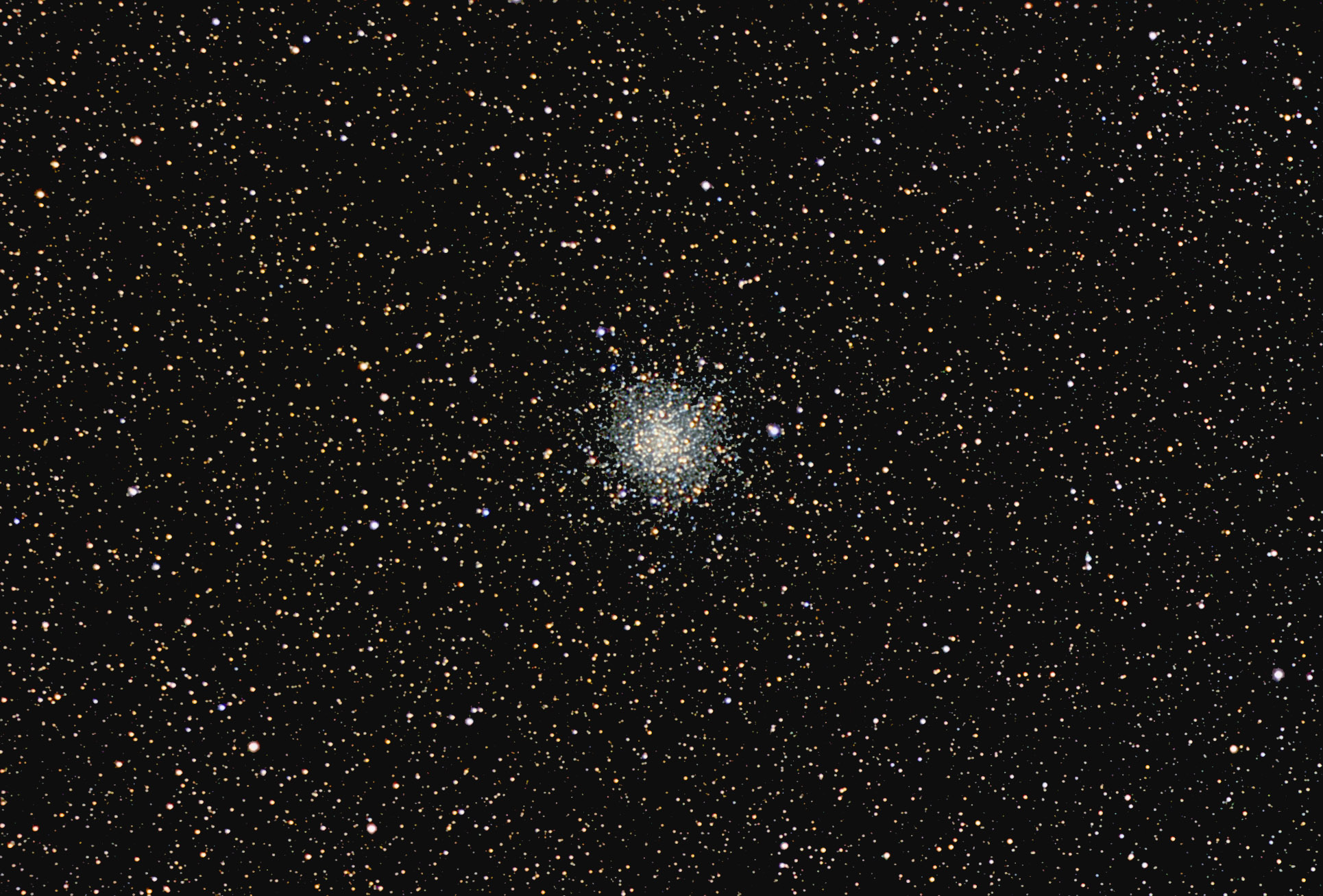| Description | Images |
Object name: M056Designation(s): M056, M56 is a globular star cluster in Lyra not far from the far more famous Ring Nebula, M57. I took only luminance data back on January 8, 2007, Months later I finally took color data but found I couldn't match the two. In the meantime, I'd completely changed the optical configuration of my scope. This changed various distortions found in all optical systems. I greatly reduced them but now there was no way to match the color data to the luminosity image with the crappy software I had at the time. Even adjusting for scale (original was 1.03" per pixel while the color was 1.01" per pixel, and rotation the stars still wouldn't line up in many parts of the image. I resigned myself to redoing it from the beginning as in the year after color data was taken I'd further reduced distortions in the system meaning new luminosity data wouldn't match the year older color data. Then a few months ago I splurged and bought a new program that can match "unmatchable" frames like these, RegiStar -- now there are several that do this but it was the only one at back in 2007. I'd tried demos of several even more expensive programs that claimed to do this but wouldn't match something as different as in this M56 series so had about given up but tried RegiStar, a very old program, really designed for making mosaics where the overlap often has differing distortions. It did the job perfectly. So now I have a color version 2 years in the making. Problem is, at the time, I knew just enough processing to be dangerous and severely damaged the image. The original data is buried in the basement so until I can dig out the old hard drive the data is on this will have to do. Related Designation(s):2MASS J19163531+3011014, 2MASS J19163535+3011065, 2MASS J19163571+3011024, LEDA 2802694, M056, MESSIER 056, NGC 6779, [LM2010] 43, |
